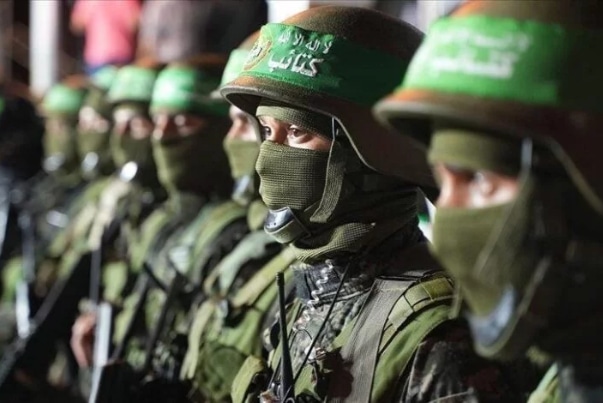Why and how the origin of Hamas and Hezbollah’s battle with Israel and the role of Iran and America in the current crisis.
Hundreds of thousands of militiamen represent the “Islamic Resistance” who are responsible for the liberation of Palestine; With 300,000 Israeli troops near Gaza, these figures show why a multi-sided war is Israel’s worst nightmare scenario, especially with the crisis unfolding in the West Bank.
Foreign media: With the escalation of massacres and tragedies in Gaza, the regional threat posed by Tehran-backed militia groups and their massive missile arsenals is no longer merely an apparent threat. Hundreds of thousands of extremist transnational militias are engaging in a conflict that is ostensibly with Israel but is likely to involve the United States, its allies, and the region.
Militias are amassing along the borders of Syria, Lebanon and Israel, where rocket attacks, skirmishes and airstrikes have inevitably increased. Israeli military figures have long argued that a decisive confrontation with these factions is ultimately necessary, especially now that Israel’s leaders widely believe that Iran started the latest conflict through Hamas.
More than eight thousand people have been killed in Gaza, including about 3,200 Palestinian children. The eruption of fire on Israel’s northern border will bring a more intense conflict, and Hezbollah boasts of having 100,000 fighters and 150,000 missiles.
Al-Hashd al-Shaabi or Popular Mobilization of Iraq has more than 240,000 fighters and also has many affiliated forces in Syria and Yemen. And finally, there are 190,000 fighters of the Islamic Revolutionary Guard Corps, many of whom are currently stationed throughout the region. These figures are compared to 170,000 active Israeli military personnel and 460,000 reserve forces.
With 300,000 Israeli troops near Gaza, these figures show why a multi-sided war is Israel’s worst nightmare scenario, especially with the crisis unfolding in the West Bank. With the arrival of militia groups and proxy forces of Iran, the intervention of the United States of America can become inevitable and Israel cannot fight all of them at once and at the same time.
America’s anger about the all-out conflict manifests itself in panicked behavior, one that has passively seen 18 militant attacks on US targets in Iraq and Syria, followed by two embarrassingly symbolic strikes against militant installations on the Syrian border. And Iraq responded.
White House spokesman John Kirby said: “No one is looking for a conflict with Iran.” US Defense Secretary Lloyd Austin said the US had “no intention or desire to engage in further hostilities”. But as militant attacks continue, the United States may be reluctantly drawn into a conflict.
Western nationals are told to leave Lebanon. With the only currently operating airport in Beirut issuing evacuation protocols, there is widespread panic about being caught in the line of fire of an Israeli invasion.
This conflict is only possible because all parties have created and provoked dangerous phenomena that they were not able to control. The existence of Hezbollah and Hamas is the result of Israel’s historical intrigues. Hezbollah was founded in the smoky ruins of Israel’s 1982 invasion of Lebanon, and the rise of Hamas has been attributed to Israel’s promotion of the Palestinian Islamist movement as a counterweight to the secular PLO.
Benjamin Netanyahu’s unveiling of the two-state solution decimated Palestinian moderate and intellectual thought, leaving armed Islamists as the only existing institutions with ostensibly viable strategies for resisting the occupation.
Many Israeli and American columnists argue that Netanyahu and Hamas enjoyed a decades-long “symbiotic” relationship, nurturing each other for partisan political calculations. Malevolent mobs, murderous Christian settlers, mobilized by far-right puppets, are fueling simmering chaos in the West Bank. Chaos gives the possibility of terrible tension. The only possible result of the massacre in Gaza will be to arouse the desire for revenge in the new generations.
Tehran is trying to control the multiple transnational forces it has cultivated. Paramilitary commanders such as Qais Khazali see constant provocation as an endlessly productive strategy in a business built on chaos and busyness.
Kataib Hezbollah has threatened to attack Persian Gulf countries, the Houthis are flying drones over the airspace of Egypt and Saudi Arabia, and Iraqi militias are restricting oil supplies along the Jordanian border, all contributing to conflicts and tensions. They are fueling a region.
Tehran’s statements call for de-escalation and at the same time are provocative. Hossein Amirabdollahian, the Minister of Foreign Affairs of the Islamic Republic of Iran, praised militias like Hezbollah who “put their fingers on the trigger” and praised them that their next moves will be “much more powerful and deeper than what you are witnessing.”

